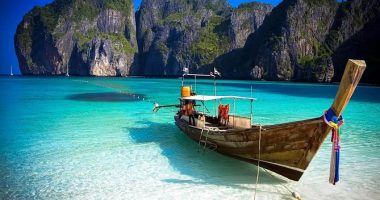Formation and Features of Sea Caves
Geological Process
The formation of these sea caves begins with the erosion of limestone cliffs by seawater. Limestone is particularly susceptible to chemical weathering due to its composition, which reacts with acidic seawater to create cavities and tunnels within the rock. The constant movement of tides further erodes these openings, eventually forming large caverns.
Unique Characteristics
Phang Nga Bay’s shallow waters and protected environment preserve these delicate structures, allowing them to maintain their intricate formations. The bay’s crystal-clear waters enhance the visual appeal of these formations, creating a mesmerizing environment that attracts adventurers and nature enthusiasts alike.
Exploring Popular Caves in Phang Nga Bay
Tham Lod (Bat Cave)
Located on Panak Island, Tham Lod is one of Phang Nga Bay’s most fascinating attractions. This cave is named after its large bat population and features extensive passageways adorned with impressive stalactites and stalagmites. Visitors can paddle through these passages for an unforgettable experience.
Blue’s Cave on Hong Island
Blue’s Cave offers access to hidden lagoons surrounded by towering limestone cliffs. Paddling through its entrance reveals serene turquoise waters that make it a favorite spot for kayakers seeking tranquility.
Touring Options in Phang Nga Bay
Guided Tours Available
Visitors can explore Phang Nga Bay through various guided tours that include canoeing or kayaking trips into several island caves. These tours provide an immersive experience amidst the bay’s majestic landscapes.
Conservation Efforts
The preservation efforts in place ensure that both tourists and local wildlife benefit from this unique ecosystem without causing harm to it. This balance between tourism and conservation highlights the importance of responsible travel practices in such sensitive environments.








